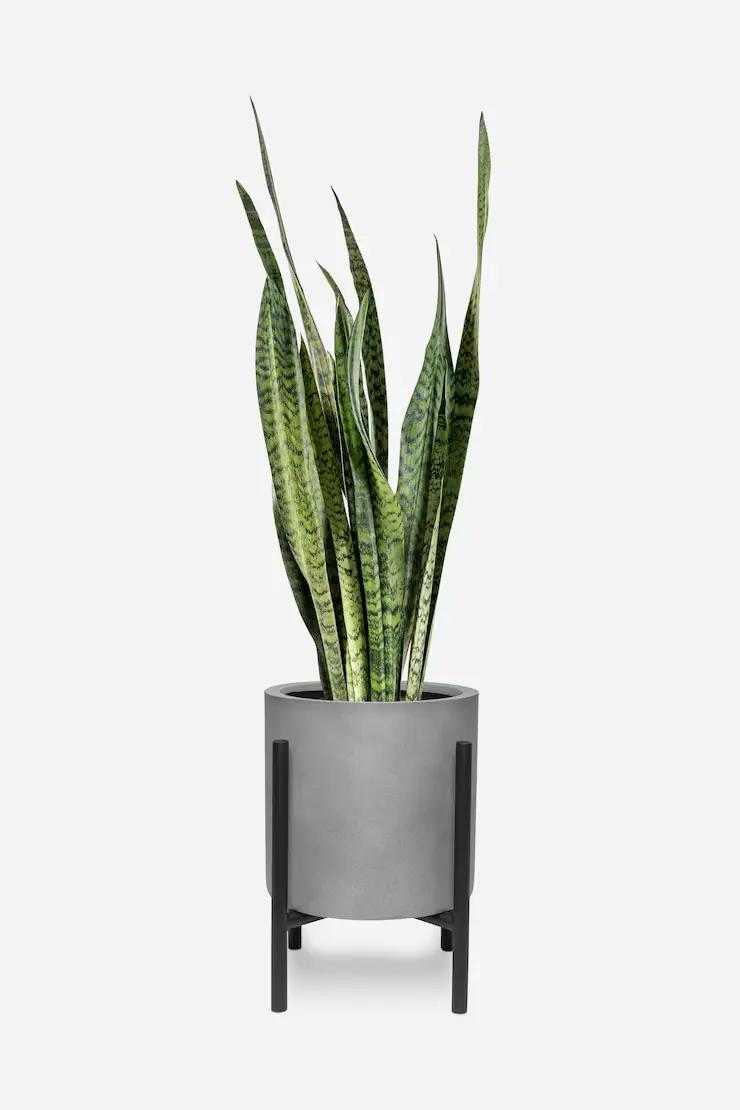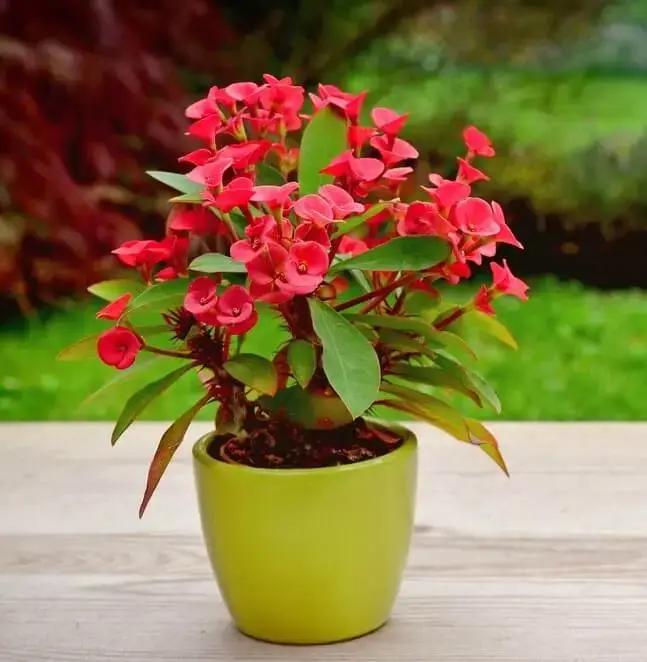Snake Plant
Sansevieria trifasciata

The Snake Plant, also known as Sansevieria or Mother-in-Law’s Tongue, is a hardy and stylish houseplant beloved for its upright, sword-like leaves and architectural presence. Native to West Africa, this low-maintenance plant has become a staple in modern homes due to its resilience and air-purifying qualities.
Its striking foliage features variegated green leaves with bold yellow or silver edges, adding texture and vertical interest to any room. Snake Plants are known to tolerate neglect, thrive in low to bright indirect light, and require minimal watering—making them perfect for beginners, busy individuals, or office spaces.
Beyond its aesthetic appeal, the Snake Plant is also celebrated for its ability to remove toxins from the air, including formaldehyde and benzene, according to NASA’s Clean Air Study. With very few pests or diseases to worry about, and propagation as simple as dividing or rooting a leaf cutting, the Snake Plant is one of the easiest and most rewarding houseplants to grow.
Whether you're looking to green up a dim corner or add a touch of sculptural elegance to your decor, the Snake Plant is a timeless choice.
Quick Info
- Light: Low
- Water: Low
- Size: 2–3 feet tall
- Humidity: Low
- Temp: 60–85°F
- Flowering: No
- Type: Succulent, Grass
- Dog Safe: No
- Cat Safe: No
- Kid Safe: No
Snake Plant Toxicity – Is It Safe for Pets?
- Dog Safe: No
- Cat Safe: No
- Kid Safe: No
Notes for Pets: Toxic to pets if ingested. Symptoms include nausea, vomiting, and diarrhea.
Notes for Kids: Can cause mild nausea or vomiting if chewed or swallowed.
How to Care for a Snake Plant
Soil: Use a gritty, well-draining mix like cactus or succulent soil. Avoid moisture-retaining soils.
Watering: Water deeply only when soil is fully dry — usually every 2–3 weeks. Reduce to once a month in winter.
Light: Thrives in bright, indirect light. Tolerates low light, but avoid intense direct sun.
Humidity: Prefers low humidity. No misting is needed.
Temperature: Ideal range is 60–85°F (15–29°C). Protect from cold drafts.
Fertilizer: Not necessary, but optional. If desired, use diluted cactus fertilizer once a month in spring/summer only.
Repotting: Every 2–3 years or when rootbound. Choose a pot with drainage holes.
Propagation: Easily propagated by leaf cuttings or dividing rhizomes in spring. Learn how to propagate a Snake Plant →
Snake Plant Problems
Root rot: Caused by overwatering or soggy soil. The base of the plant becomes mushy or black. Always use well-draining soil and let it fully dry between waterings.
Curling or wrinkled leaves: Usually a sign of underwatering, cold drafts, or low humidity. Water thoroughly and move the plant away from air vents or cold windows.
Soft or mushy leaves: Overwatering or poor drainage. Remove affected leaves and improve soil conditions.
Brown tips or edges: Often due to inconsistent watering, low humidity, or salt buildup in the soil. Use distilled water if your tap water is hard.
No new growth: Can happen during winter dormancy, or due to low light or cool temps. Move to a brighter, warmer spot.
Pale or yellowing leaves: Often a result of too much sun or poor drainage. Filter direct light and check soil moisture.
Pests (rare): Occasionally attracts mealybugs or spider mites. Wipe leaves with a damp cloth and treat infestations with neem oil or insecticidal soap.
FAQs
Water your Snake Plant every 2–3 weeks, allowing the soil to dry completely between waterings. Over-watering can lead to root rot.
Yes, Snake Plants can help filter indoor air by removing toxins like formaldehyde and benzene. However, for significant results, many plants would be needed in a space.
No, Snake Plants are toxic to cats and dogs if ingested, potentially causing nausea, vomiting, or diarrhea.
Yes, Snake Plants tolerate low light very well, making them ideal for dim indoor spaces. They grow more quickly in bright, indirect light.
Most Snake Plants grow between 2 to 4 feet tall indoors, depending on the variety and care conditions.
Curling or falling leaves may be due to over-watering, poor lighting, or cold drafts. Ensure the plant has well-draining soil and minimal watering.


